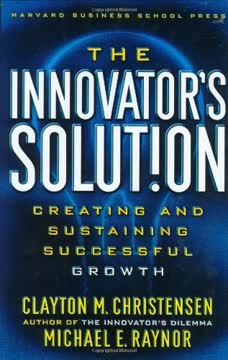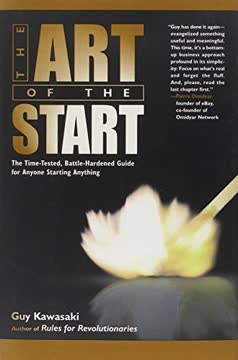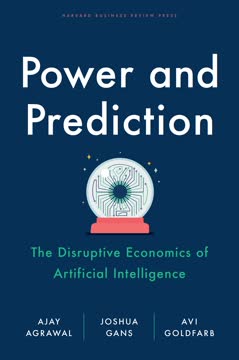가지 주요 요점
1. 고객 개발은 스타트업 성공에 필수적이다
고객 개발의 목표는 잠재 고객으로부터 기능 목록을 수집하는 것도, 많은 포커스 그룹을 운영하는 것도 아니다.
전통적인 제품 개발을 재고하라. 고객 개발 모델은 먼저 제품을 만들고 나서 고객을 찾는 기존의 지혜에 도전한다. 대신, 제품을 완전히 개발하기 전에 고객과 그들의 문제에 대해 배우고 발견하는 것을 강조한다. 이 접근 방식은 아무도 원하지 않는 것을 만드는 위험을 줄인다.
4단계 프로세스. 고객 개발 모델은 네 단계로 구성된다:
- 고객 발견: 고객의 문제와 필요를 이해한다
- 고객 검증: 반복 가능한 판매 프로세스를 개발한다
- 고객 창출: 최종 사용자 수요를 생성한다
- 회사 구축: 정식 조직으로 전환한다
이 과정을 따르면 스타트업은 비즈니스 모델과 제품-시장 적합성을 검증한 후 확장할 수 있어 성공 가능성을 크게 높일 수 있다.
2. 시장 유형이 전략과 실행을 결정한다
시장 유형은 모든 것을 바꾼다 — 고객의 필요와 채택 속도를 평가하는 방법, 고객이 자신의 필요를 이해하는 방법, 제품을 고객에게 포지셔닝하는 방법 등.
네 가지 시장 유형. 스타트업은 일반적으로 다음 네 가지 범주 중 하나에 속한다:
- 기존 시장에 진입
- 완전히 새로운 시장 창출
- 저비용 진입자로 기존 시장 재분할
- 틈새 플레이어로 기존 시장 재분할
맞춤형 전략. 각 시장 유형은 고객 획득, 판매, 마케팅 및 재무 예측에 대해 다른 접근 방식을 요구한다. 예를 들어, 기존 시장에서는 제품 차별화와 시장 점유율 확보에 중점을 둔다. 새로운 시장에서는 고객 교육과 수요 창출이 우선이다. 시장 유형을 이해하는 것은 적절한 전략을 개발하고 성장과 수익성에 대한 현실적인 기대를 설정하는 데 중요하다.
3. 고객 발견이 제품-시장 적합성을 검증한다
고객 개발의 목표는 그 비전에 대한 고객과 시장이 있는지 확인하는 것이다.
건물 밖으로 나가라. 고객 발견의 첫 번째 단계는 고객 문제와 제안된 솔루션에 대한 가설을 테스트하는 것이다. 이는 잠재 고객과 직접 소통하여 그들의 필요, 워크플로우 및 고충을 이해하는 것을 포함한다. 목표는 판매가 아니라 듣고 배우는 것이다.
반복적인 과정. 고객 발견은 선형이 아니라 반복적이다. 이는 다음을 포함한다:
- 고객과 그들의 문제에 대한 가설 개발
- 고객 상호작용을 통해 이러한 가설 테스트
- 피드백을 기반으로 제품 개념 수정
- 제품-시장 적합성을 달성할 때까지 이 과정을 반복
이 단계는 스타트업이 실제로 중요한 고객 문제를 해결하지 않는 제품을 만드는 비용이 많이 드는 실수를 피하는 데 도움을 준다.
4. 고객 검증이 비즈니스 모델을 증명한다
가정을 테스트하는 유일한 유효한 방법은 제품을 판매하는 것이다.
판매 로드맵 개발. 고객 검증은 반복 가능한 판매 프로세스를 만드는 데 중점을 둔다. 이는 다음을 포함한다:
- 초기 수용자(earlyvangelists) 식별 및 판매
- 포지셔닝 전략 개발
- 판매 로드맵 작성
- 실제 판매를 통해 비즈니스 모델 검증
피벗 또는 진행. 이 단계의 결과는 중요하다. 반복 가능한 판매 프로세스를 찾지 못하거나 비즈니스 모델이 수익성이 없다면, 피벗하고 고객 발견으로 돌아갈 때이다. 반복 가능한 판매 프로세스가 검증되었을 때만 확장으로 진행해야 한다.
5. 고객 창출이 수요를 유도하고 판매를 확장한다
시장 유형은 이 전환이 어떻게 이루어질지뿐만 아니라 필요한 인력, 채용 및 지출 유형도 결정한다.
시장별 전략. 고객 창출 전략은 시장 유형에 따라 다르다:
- 기존 시장: 제품 차별화와 공격적인 마케팅에 중점
- 새로운 시장: 고객 교육과 시장 창출 강조
- 재분할된 시장: 고유한 가치 제안을 강조하는 포지셔닝 및 브랜딩 사용
캐즘을 넘다. 이 단계는 초기 수용자에서 주류 시장으로 이동하는 도전을 다룬다. 이는 다음을 포함한다:
- 적절한 마케팅 및 판매 전략 개발
- 출시 계획 작성 및 실행
- 수요 창출 활동 확장
핵심은 수요 창출 노력을 시장 유형과 시장 채택 단계에 맞추는 것이다.
6. 회사 구축이 미션 중심 조직으로 전환된다
빠른 대응 부서를 만드는 것은 학습 및 발견 단계에서 대기업이 필요로 하는 기능 부서로의 자연스러운 진화를 제공한다.
조직을 발전시키다. 회사가 성장함에 따라 초기 고객 개발 팀에서 더 구조화된 조직으로 전환해야 한다. 이는 다음을 포함한다:
- 기능 부서(판매, 마케팅, 비즈니스 개발) 생성
- 미션 중심의 문화 개발
- 민첩성을 유지하면서 프로세스 구현
구조와 유연성의 균형. 도전 과제는 필요한 프로세스를 구현하면서 초기 성공을 이끈 스타트업의 속도와 적응력을 유지하는 것이다. 이는 필요한 프로세스를 구현하면서도 기업가 정신을 유지하는 것을 요구한다.
7. 빠른 대응 부서가 확장 시 민첩성을 유지한다
일관되게 더 빠르게 결정을 내리고 실행할 수 있는 사람은 엄청난, 종종 결정적인, 이점을 얻는다.
OODA 루프. 빠른 대응 부서는 OODA 루프(Observe, Orient, Decide, Act)를 사용하여 민첩성을 유지한다:
- 관찰: 정보를 신속하고 효율적으로 수집
- 방향 설정: 회사의 미션 맥락에서 정보를 분석하고 종합
- 결정: 신속하고 분산된 결정 내리기
- 행동: 결정을 신속하고 효과적으로 실행
의사 결정 분권화. 속도와 유연성을 유지하려면 조직의 모든 수준에서 직원들이 결정을 내릴 수 있도록 권한을 부여해야 한다. 이는 다음을 요구한다:
- 회사의 미션과 목표에 대한 명확한 소통
- 직원의 판단에 대한 신뢰
- 실수로부터 배우는 문화를 가치 있게 여기는 문화
이 원칙을 구현함으로써 회사는 성장하면서도 스타트업과 같은 민첩성을 유지할 수 있다.
8. 창업자는 회사의 성장 단계에 따라 진화해야 한다
아이러니하게도 투자자들이 주류 고객에게 도달하기 위해 회사의 모멘텀과 유연성을 유지해야 할 때, 관료주의를 대체함으로써 걸려 넘어지고, 기업가들은 자신들이 만든 성공에 맞게 관리 스타일을 적응하지 못한다.
리더십 진화. 창업자는 회사가 성장함에 따라 리더십 스타일을 적응해야 한다:
- 초기 단계: 학습과 발견에 중점을 둔 비전적이고 실질적인 리더십
- 성장 단계: 미션 중심의 관리로 전환, 더 많은 책임 위임
- 확장 단계: 기업가 정신을 유지하면서 프로세스와 구조 개발
균형 잡기. 창업자에게 도전 과제는 초기 성공을 이끈 열정과 비전을 잃지 않으면서 자신의 기술과 관리 스타일을 진화시키는 것이다. 이는 다음을 포함할 수 있다:
- 조직 관리 및 전략적 계획과 같은 새로운 기술 개발
- 창업 팀의 기술을 보완할 수 있는 경험 많은 임원 영입
- 회사의 비전을 실행할 수 있도록 다른 사람들에게 위임하고 신뢰하는 법 배우기
성공적인 창업자는 회사가 성장함에 따라 자신의 역할이 변화해야 한다는 것을 인식하고 각 단계의 새로운 도전에 맞추어 적극적으로 적응한다.
마지막 업데이트 날짜:
FAQ
What's The Four Steps to the Epiphany about?
- Focus on Startups: The book provides a framework for startups to effectively develop products and find customers, emphasizing the importance of understanding customer needs.
- Customer Development Model: Steve Blank introduces the Customer Development model, consisting of four steps: Customer Discovery, Customer Validation, Customer Creation, and Company Building.
- Contrast with Traditional Approaches: This model contrasts with traditional product development, which often leads to failure by not prioritizing customer needs.
- Learning from Experience: The author shares insights from his entrepreneurial journey, illustrating how successful startups follow a repeatable process to mitigate risks and achieve growth.
Why should I read The Four Steps to the Epiphany?
- Practical Guidance: The book offers actionable strategies for entrepreneurs to navigate the uncertainties of starting a new business.
- Foundation for Lean Startup: It is considered a foundational text for the Lean Startup movement, influencing many entrepreneurs and educators.
- Real-World Examples: Steve Blank uses case studies and personal anecdotes to illustrate key concepts, making the material relatable and easier to understand.
What are the key takeaways of The Four Steps to the Epiphany?
- Customer Development is Crucial: Startups must prioritize customer development over product development to understand customer problems and validate solutions.
- Iterative Process: The Customer Development model is iterative, encouraging startups to refine their hypotheses based on customer feedback.
- Market Types Matter: Recognizing which market type a startup falls into can significantly influence its approach to customer acquisition and product development.
What is the Customer Development model in The Four Steps to the Epiphany?
- Four Steps: The model consists of Customer Discovery, Customer Validation, Customer Creation, and Company Building, each focusing on different aspects of customer engagement.
- Iterative Learning: It encourages learning from customers through direct engagement and feedback, refining product offerings and business strategies.
- Separation from Product Development: Unlike traditional approaches, it emphasizes discovering and validating customer needs before product development.
What is Customer Discovery in The Four Steps to the Epiphany?
- Identifying Customer Problems: This phase focuses on understanding who the customers are and what problems they face.
- Testing Hypotheses: Startups formulate and test hypotheses about the product and customer needs with potential customers.
- Earlyvangelists: The concept of "earlyvangelists" refers to customers willing to take risks on new products, crucial for feedback and validation.
What is Customer Validation in The Four Steps to the Epiphany?
- Proving the Sales Roadmap: This phase aims to establish a repeatable sales process and validate the business model.
- Sales Roadmap Development: It involves creating a sales roadmap that outlines how to sell the product effectively.
- Feedback Loop: Gathering feedback from customers to refine the product and sales strategy is essential in this iterative process.
How does The Four Steps to the Epiphany define Customer Creation?
- Focus on Demand Generation: Customer Creation is about generating demand for the product after validating it with early customers.
- Positioning and Messaging: Emphasizes clear positioning and messaging that resonates with target customers.
- Ongoing Process: It requires continuous engagement with customers, adapting strategies based on market feedback and changing needs.
What are the four types of startups mentioned in The Four Steps to the Epiphany?
- Existing Market: Startups introduce a new product into an established market, facing competition from existing players.
- Resegmented Market: Startups redefine or resegment an existing market, offering unique value propositions to specific segments.
- New Market: Startups create entirely new markets with innovative products, often needing to educate customers.
- Low-End Market: Startups target the lower end of an existing market with simpler, cheaper alternatives.
What is the significance of Market Type in The Four Steps to the Epiphany?
- Guides Strategy Development: Market Type influences the strategies a startup should adopt for sales, marketing, and product development.
- Risk Assessment: Helps startups assess risks associated with entering a market, such as competition and market dynamics.
- Resource Allocation: Informs how startups allocate resources to maximize success, tailoring strategies to the Market Type.
What are some best practices for Customer Development outlined in The Four Steps to the Epiphany?
- Engage with Customers Early: Startups should prioritize engaging with customers from the outset to validate their assumptions.
- Iterate Based on Feedback: The process is iterative, requiring startups to adjust their hypotheses based on customer insights.
- Build Relationships with Earlyvangelists: Cultivating relationships with earlyvangelists provides critical feedback and support.
What are the common pitfalls startups face according to The Four Steps to the Epiphany?
- Ignoring Customer Needs: Focusing too heavily on product development without validating customer needs can lead to failure.
- Premature Scaling: Scaling operations before establishing a solid customer base and sales process can lead to unsustainable growth.
- Misunderstanding Market Types: Failing to recognize the market type can lead to inappropriate strategies for customer engagement and product positioning.
What are the best quotes from The Four Steps to the Epiphany and what do they mean?
- "Startups are not smaller versions of large companies.": Emphasizes that startups require different strategies than established businesses.
- "The goal of Customer Development is to discover what customers really want.": Highlights the importance of understanding customer needs for building successful products.
- "No business plan survives first contact with customers.": Underscores the necessity of flexibility and adaptability in the startup process.
리뷰
The Four Steps to the Epiphany는 스타트업에 대한 고객 중심 접근 방식으로 높이 평가받고 있습니다. 독자들은 고객 발견, 검증, 시장 세분화에 대한 귀중한 통찰을 칭찬합니다. 이 책은 성공적인 비즈니스를 구축하기 위한 실용적인 조언을 제공하며, 기업가들에게 필수적인 책으로 여겨집니다. 일부 독자들은 책이 다소 복잡하고 때때로 장황하다고 느끼지만, 많은 이들이 그 상세한 방법론과 실제 적용 가능성을 높이 평가합니다. 비평가들은 이 책이 B2B 기업에 초점을 맞추고 있으며, 예시가 다소 오래되었다고 지적하지만, 전반적으로 린 스타트업 방법론과 고객 개발 프로세스의 기초적인 텍스트로 간주됩니다.
Similar Books















